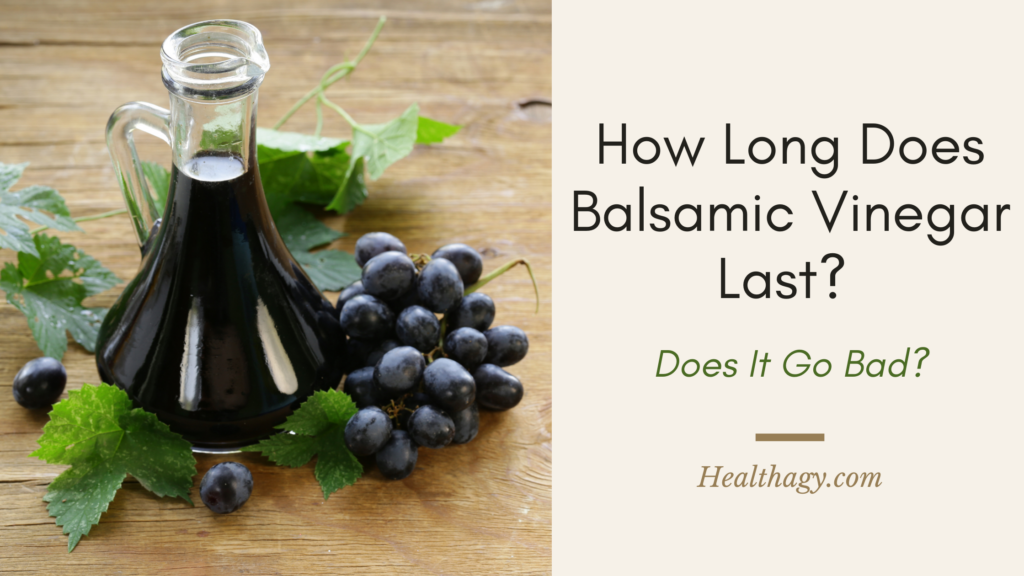Balsamic delivers a rich taste while maintaining the acidic kick of vinegar. Commonly seen in glazes, dressings, and reductions, itâs a staple of Italian dishes and has long been recognized as a valuable supplement.
For millennia, people have used balsamic vinegar to clean vegetables and aid in digestion. It has also long been favored for its complex taste, which can add rich flavor to a variety of dishes.
Traditional balsamic vinegar comes from white Trebbiano grapes harvested in Modena, Italy. Harvest takes place as late in the season as possible, followed by slow fermentation and concentration in wooden casks. Classic balsamic may be aged for over a decade before being consumed. The production of commercial balsamic, however, is much faster, with many vinegar products ready after just a few months of aging.
The European Union regulates the production of balsamic vinegar. Products that conform to EU standards receive the Protected Geographical Indication (PGI) label. Balsamic vinegar from Modena also includes the Protected Designation of Origin (PDO) label.
Balsamic vinegar contains six percent acetic acid, which is slightly higher than the acetic acid rate in distilled and apple cider vinegar.
Used medicinally through the ages, acetic acid is now recognized as a powerful antimicrobial. However, like any product containing acetic acid, balsamic vinegar should be consumed in moderation. Top health benefits associated with the acetic acid in balsamic vinegar include:
Balsamic is one of several types of vinegar thought to limit spikes in blood glucose levels. One study suggests that, if taken in moderation prior to eating, vinegar can help people with type 2 diabetes better manage their blood sugar. This study was only conducted on a small group, however, and more research will need to be done to be sure of these findings. Balsamic vinegar should not be used in place of a low-sugar diet or other recommendations from a doctor.
The acetic acid in balsamic vinegar may have an antimicrobial effect capable of minimizing the bacteria found on lettuce and other types of produce. Studies suggest that levels of Salmonella on vegetables such as arugula can be contained through exposure to vinegar.
Balsamic vinegar is low on calories, which makes it a great way to add flavor to healthy dishes without adding fat or sodium.
If used in excess, the acidic content of balsamic can lead to problems like enamel erosion or heartburn. The benefits can still be enjoyed when consumed in small amounts.
This versatile vinegar may enhance skin health, support healthy weight maintenance by increasing satiety, promote digestive health, lower blood pressure and improve blood sugar control. However, overconsumption may damage tooth enamel and lead to acid reflux or heartburn.

How to Use Balsamic Vinegar
Balsamic vinegar can be found in grocery stores, health food stores, and specialty shops. It typically comes in a dark-colored glass bottle. After purchasing, keep the vinegar in this bottle and store it somewhere cool and dry. Exposure to heat or light may harm the flavor.
While many people associate balsamic vinegar with salad, it is versatile enough to include in a variety of recipes. Try these ideas to incorporate it into your daily diet:
- Blend into homemade hummus for a rich, tangy flavor.
- Combine with honey, garlic, and mustard to make a glaze for chicken.
- Drizzle over strawberries and serve with ice cream.
- Use as dressing in a romaine salad.
- Add to a pot of creamy tomato soup.
- Combine with mayonnaise and Italian seasoning to create a delicious condiment for sandwiches.
- Mix with olive oil and parmesan cheese when roasting broccoli.
- Dip hard aged cheese into a small bowl of balsamic to add flavor.
More on Diet & Weight Management


Balsamic Vinegar Health Benefits – Regulates Blood Sugar, Insulin & Salt Replacement
FAQ
Is balsamic vinegar bad for gut health?
Does balsamic vinegar raise blood pressure?
Is balsamic vinegar inflammatory?
Are sulfites in balsamic vinegar bad for you?
Is balsamic vinegar bad for You?
Balsamic vinegar is thick, syrupy, slightly sweet and smoky. Balsamic vinegar is associated with only two potential health problems. It could erode dental enamel due to its acidity, and it may contain some lead. While the amount of lead is considered to be too small to affect adults, there’s a chance it might raise lead levels in children.
Is it good to have balsamic vinegar?
Balsamic vinegar, and vinegar in general, appears to be effective at slowing the speed at which glucose enters the blood. At least one small Lund University study reported in the European Journal of Clinical Nutrition that vinegar(acetic acid) added to a starchy meal reduced the glycemic response to the meal. This reduction may be due to vinegar’s ability to slow gastric(stomach) emptying rates, which could prove beneficial for individuals with impaired insulin sensitivity. Balsamic vinegar contains six percent acetic acid, which is slightly higher than the acetic acid in distilled and apple cider vinegar. There is little reason not to add balsamic vinegar to the diet. Balsamic vinegar is a safe condiment that contains no fat and very little natural sugar.
Can balsamic vinegar cause an upset stomach?
Consuming too much balsamic vinegar may cause an upset stomach. There are few risks to using balsamic vinegar, as it is generally safe to consume unless a person has an allergy. Possible risks include: A person should limit their intake to about 2 tablespoons or less, as drinking too much can cause an upset stomach and other issues.
Is balsamic vinegar bad for teeth?
Any food or beverage that has a pH of 4 or lower can wear away tooth enamel, and balsamic vinegar’s pH is right around 4. Acid is a bigger problem if you use traditional balsamic vinegar because it’s usually drizzled directly onto foods. Less-expensive brands are mixed with oils for salad dressing or added to foods, so the acid impact is reduced.
